Guatemala: Antigua
ተሓቲሙ: 04.03.2018
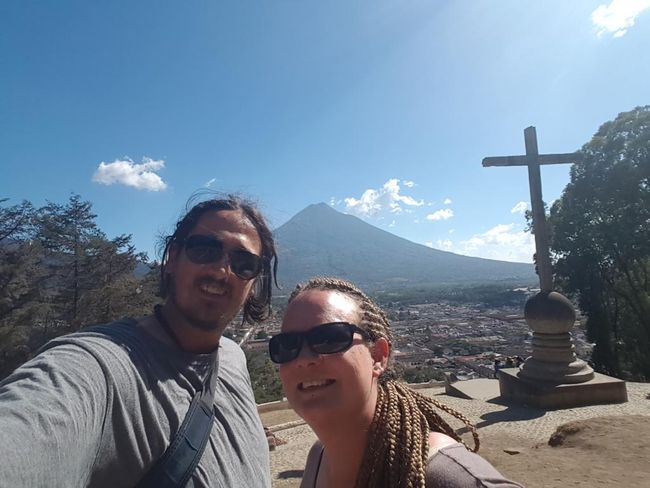
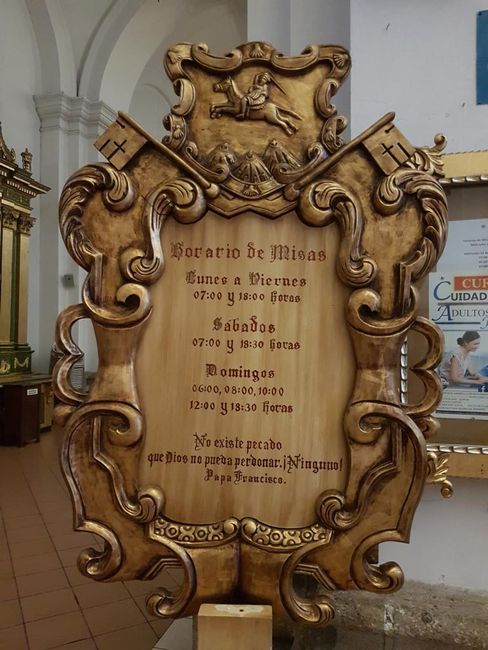
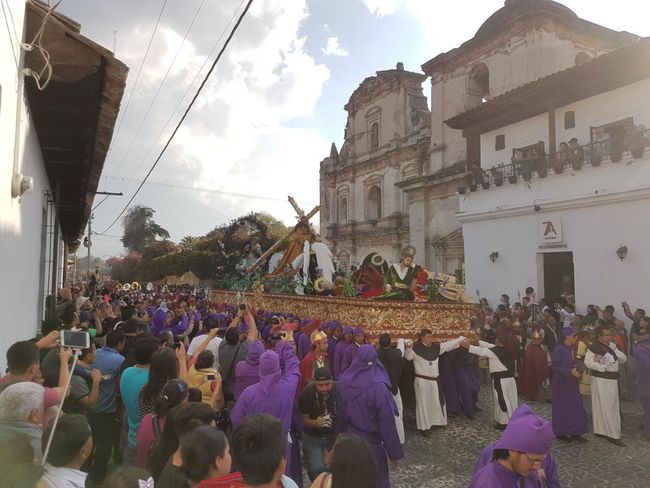
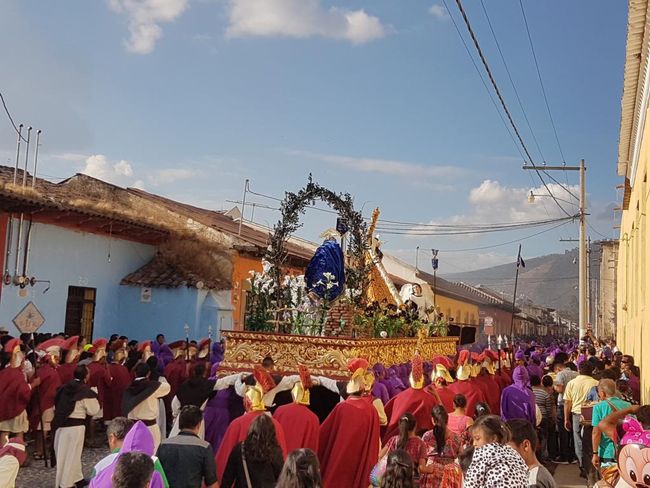
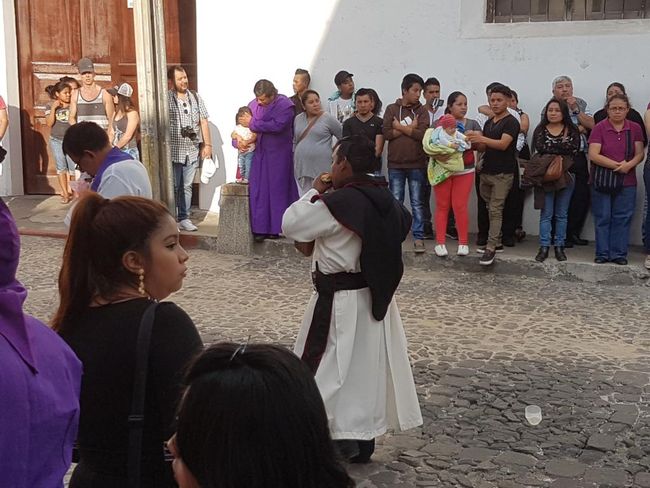
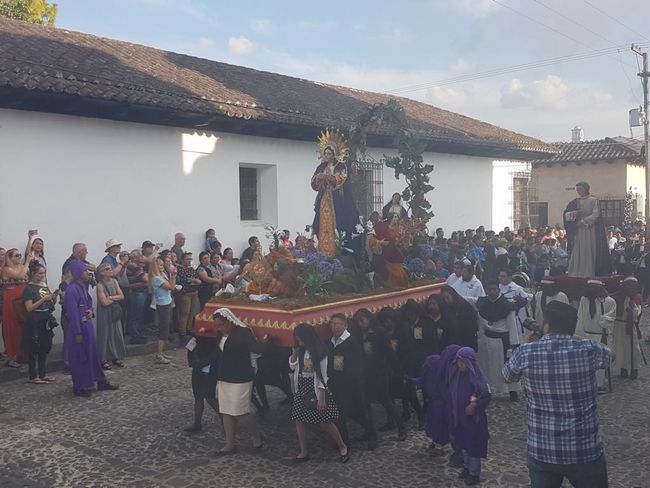
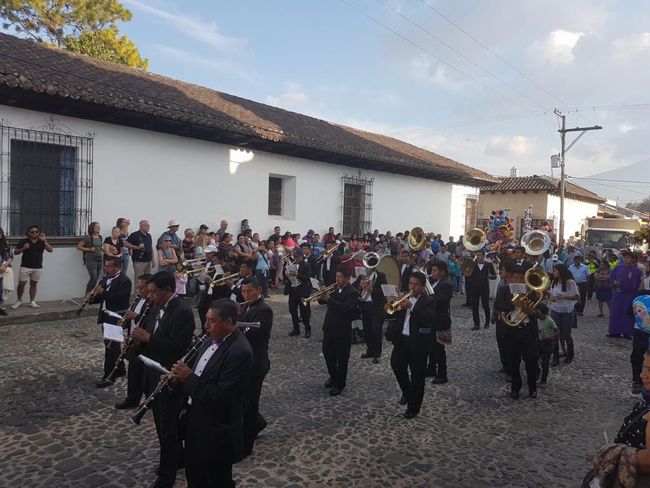
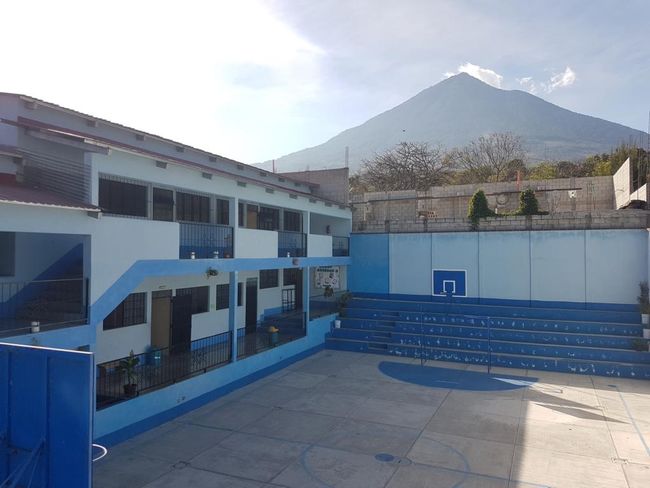
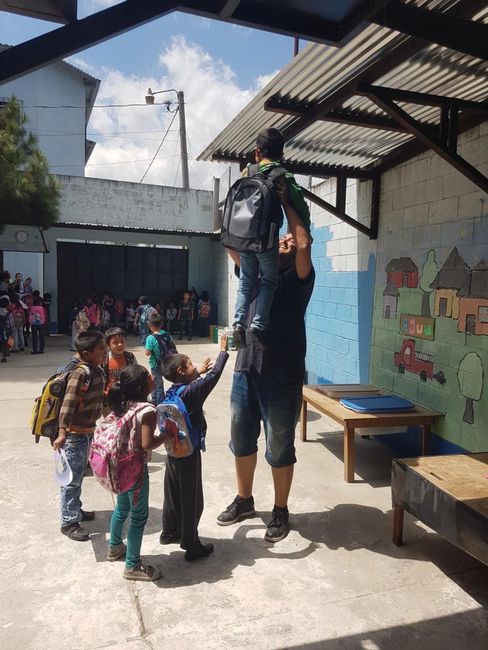
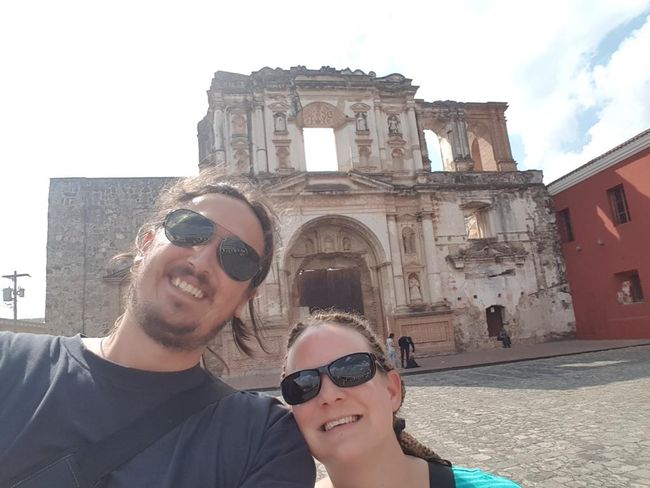
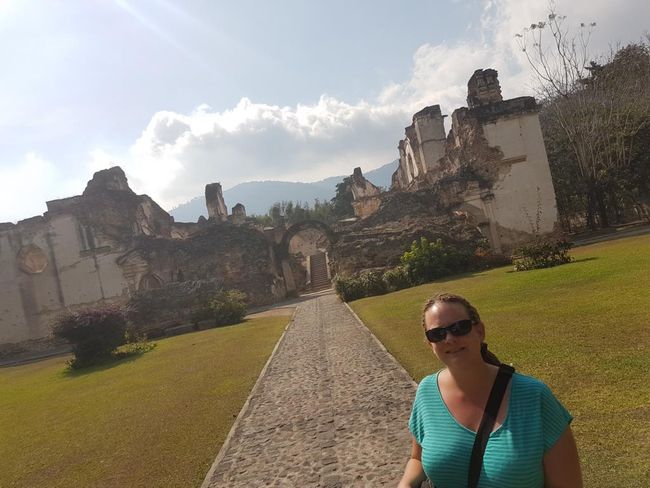
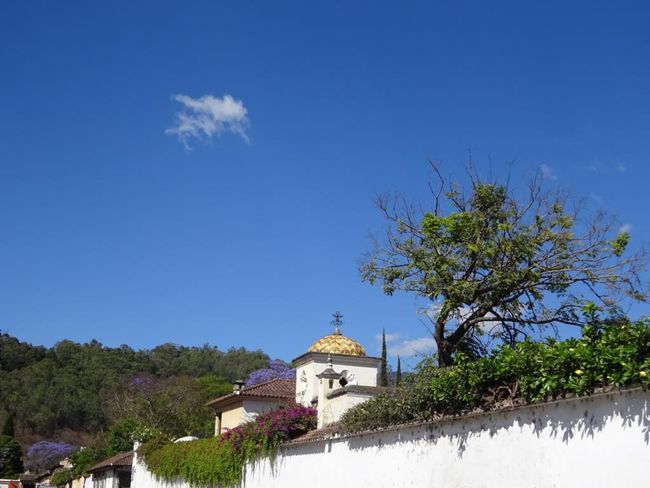
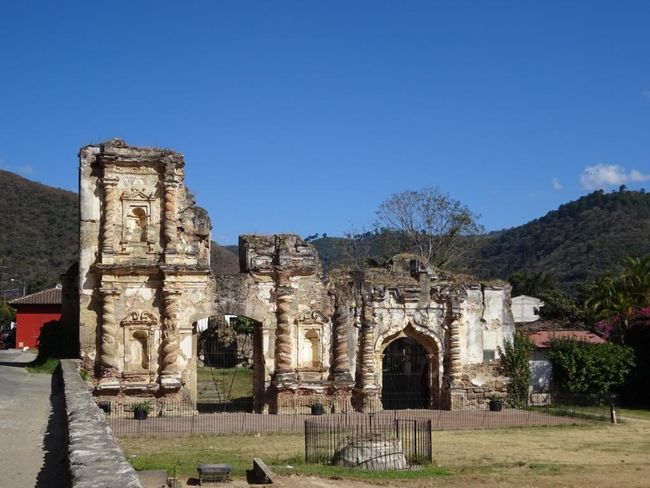
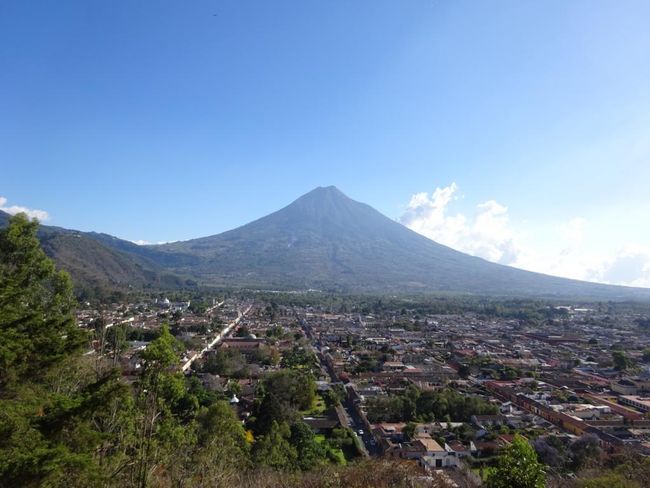
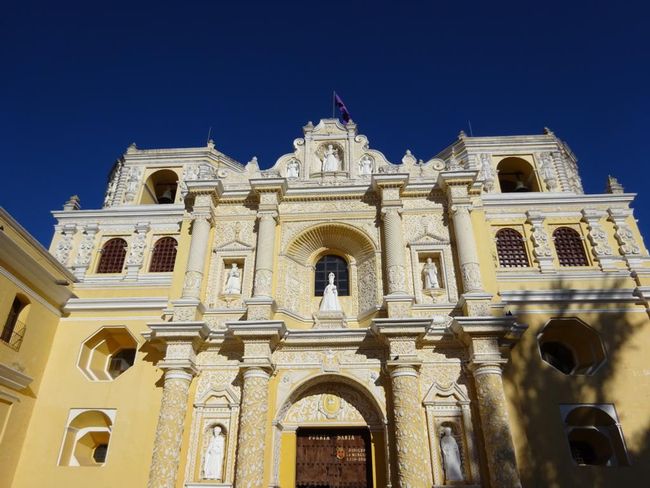
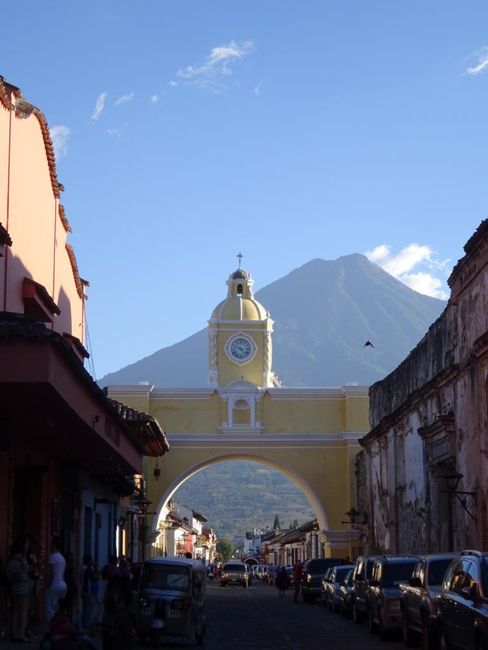
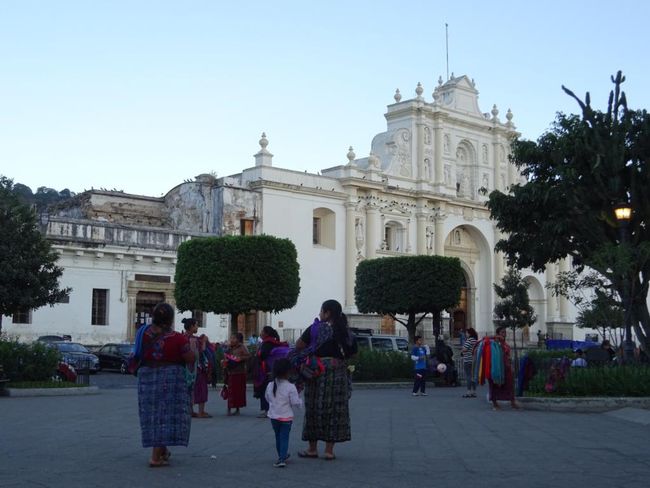
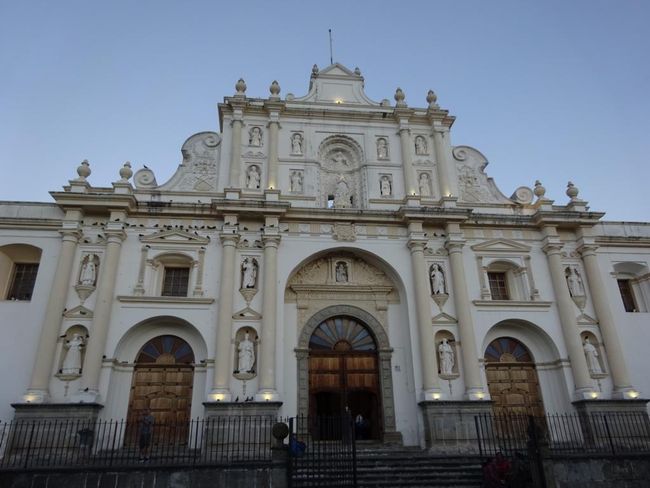
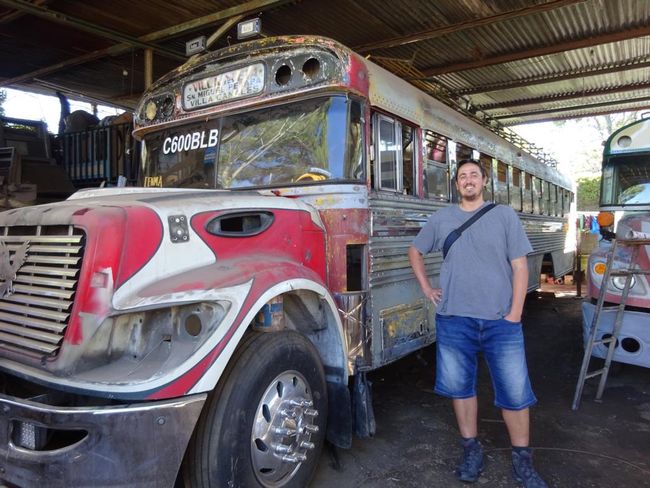
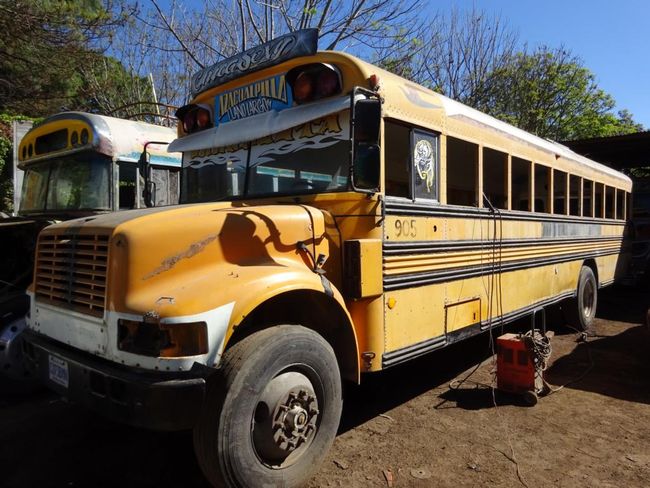
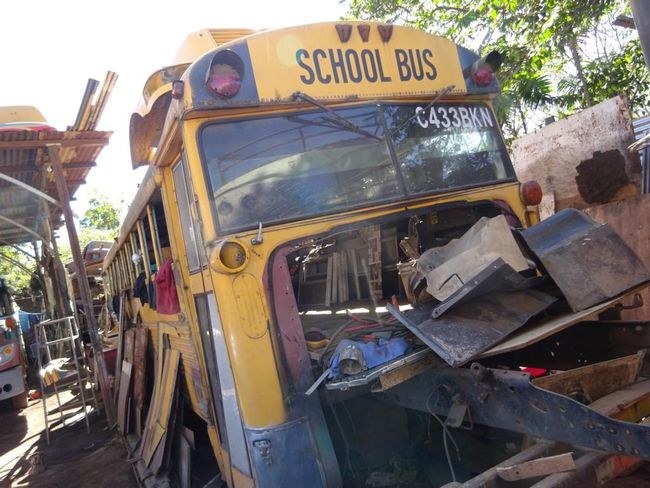
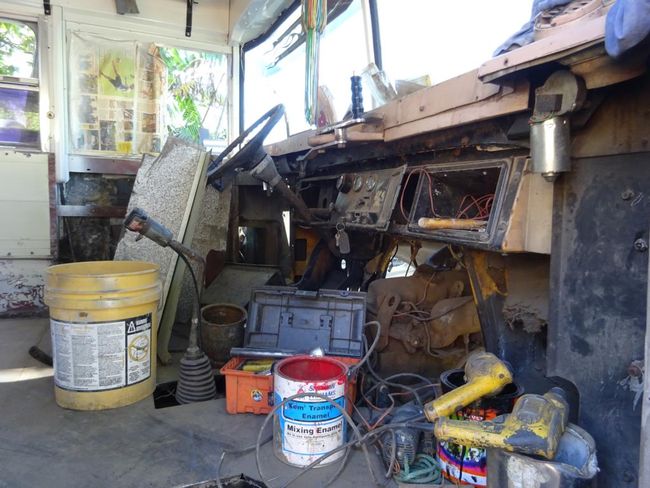
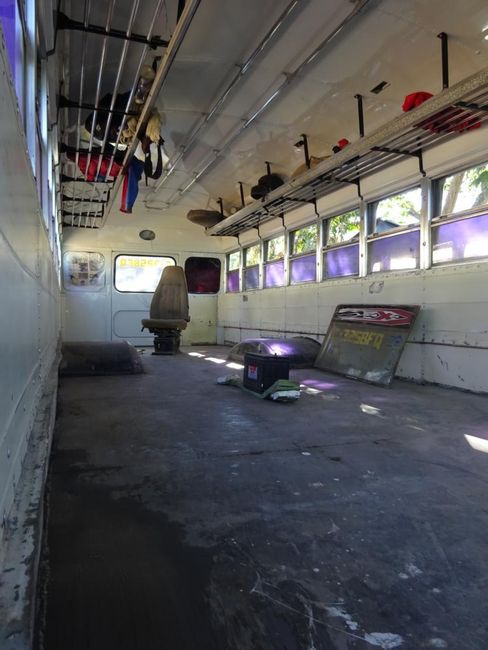
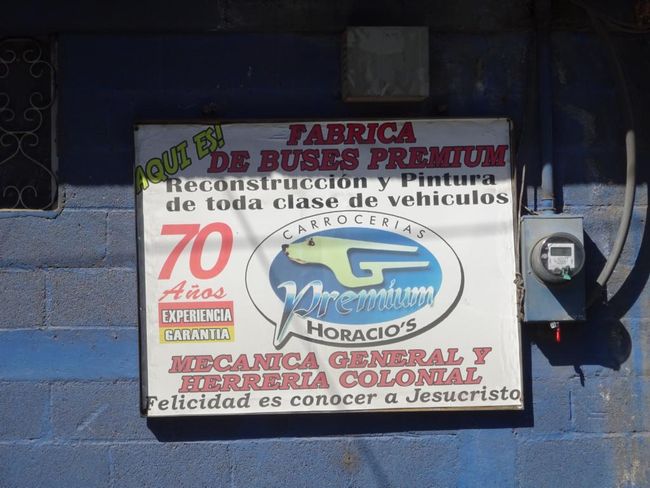
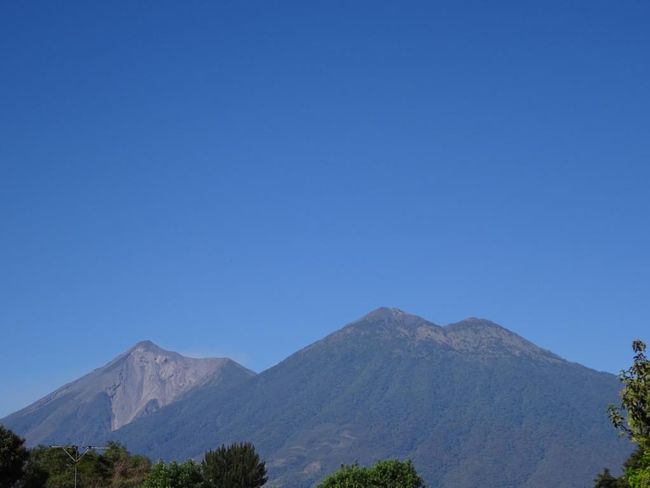
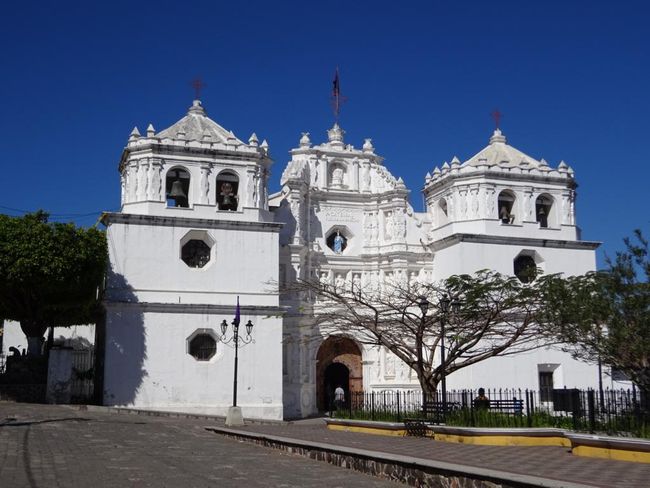
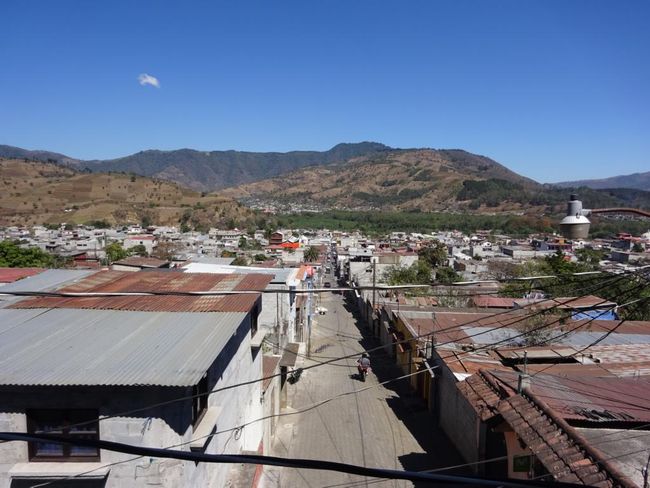
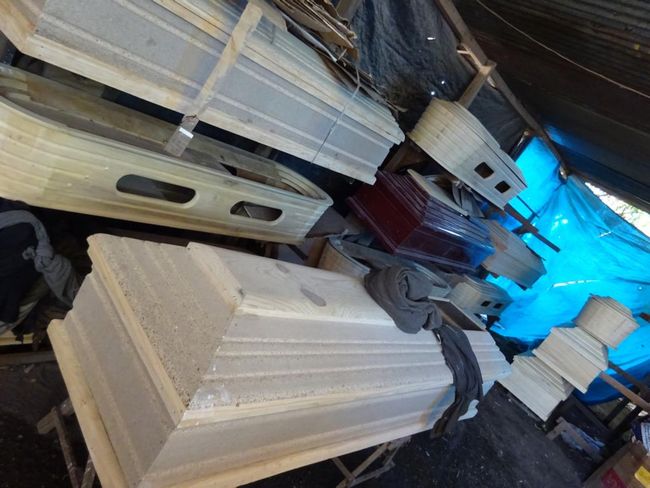
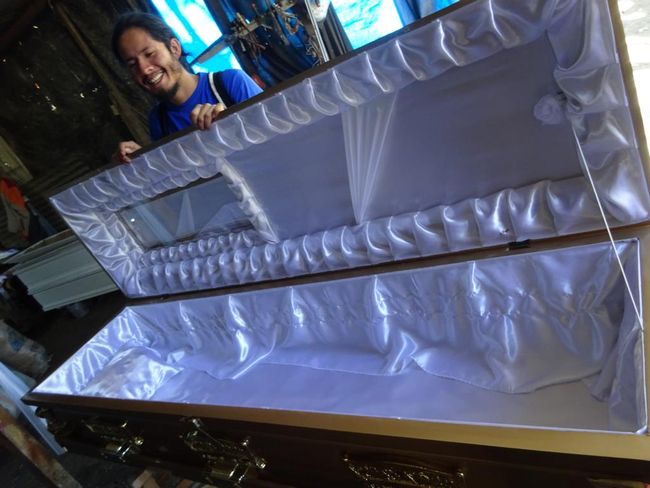

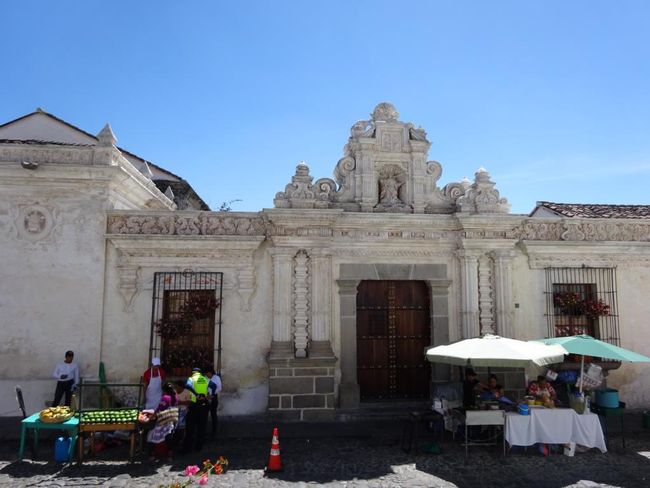
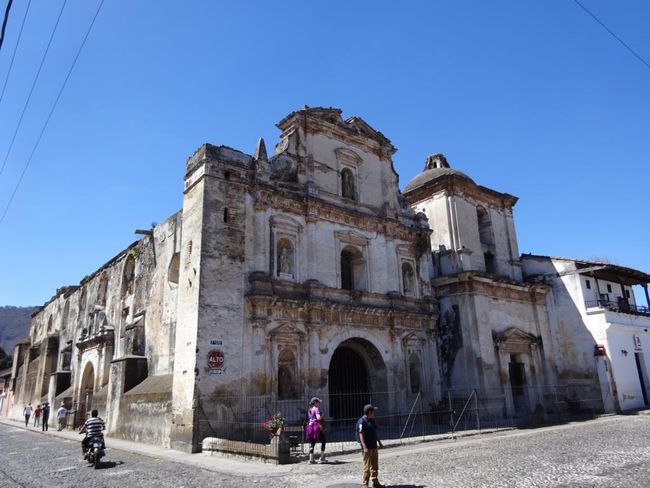
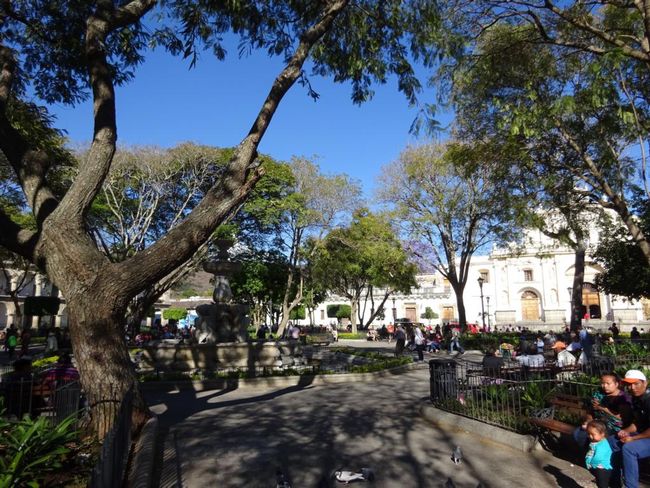
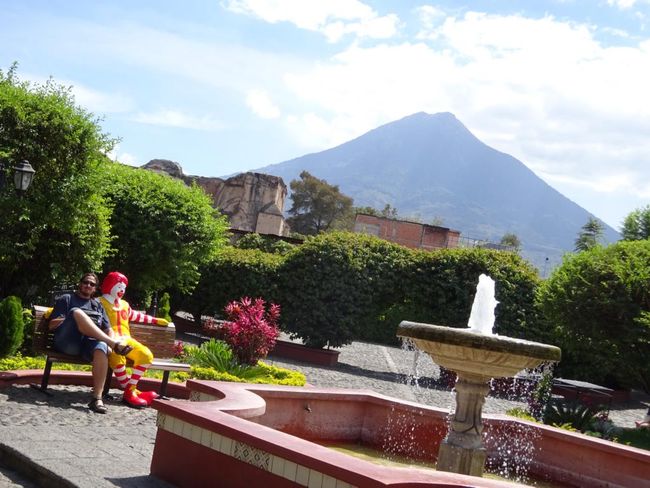
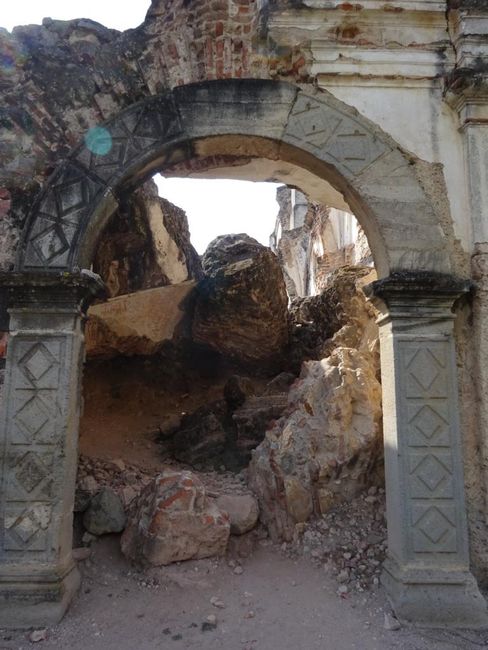
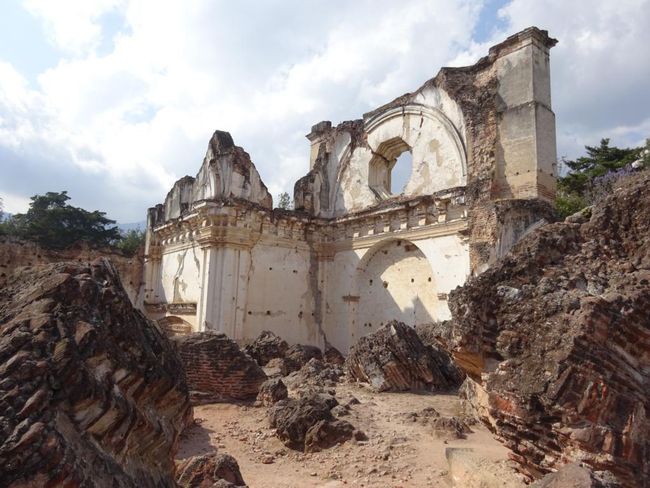
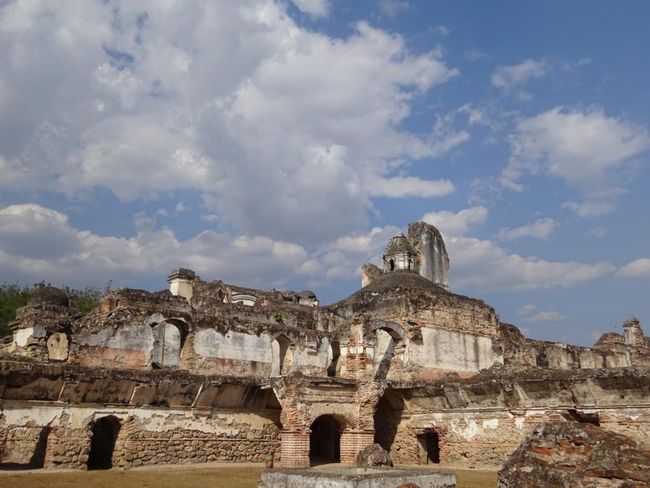
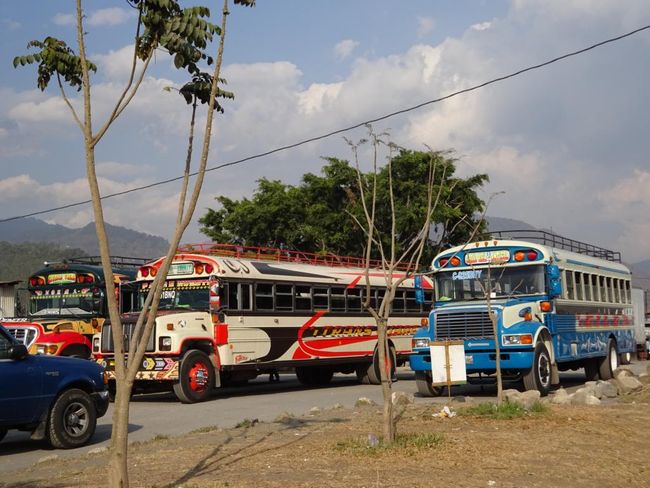
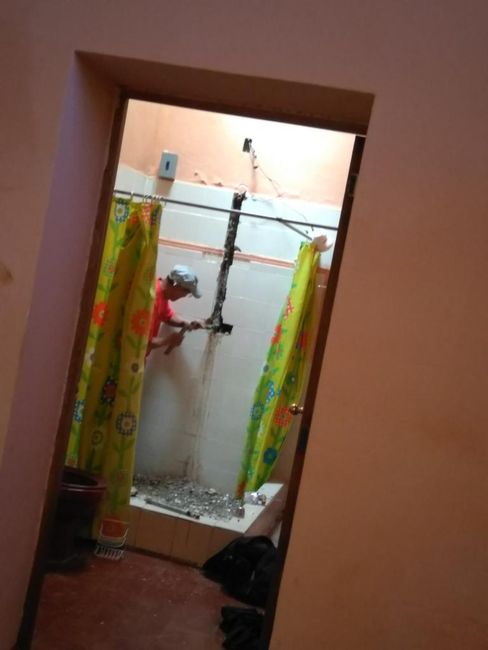
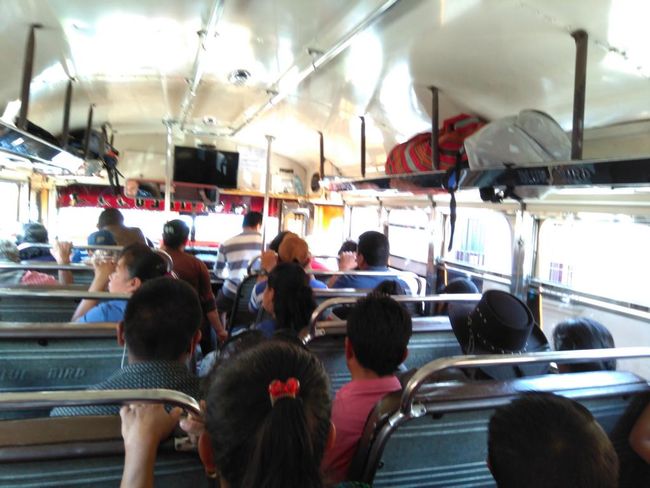
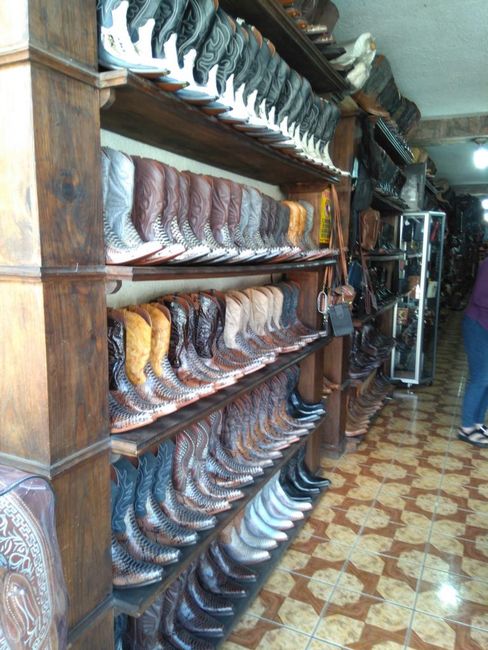
ንዜና ሳብስክራይብ ግበሩ
From Guatemala City, we took a shuttle bus to Antigua. Shuttle buses are very common in Guatemala for tourists. They are minivans with about 16-20 seats and they drive directly from hotel to hotel. The advantage: No need to carry luggage. The disadvantage: much more expensive compared to the means of transportation used by locals. The means of transportation used by locals are called 'Chicken Buses'. This name apparently comes from the fact that people often sit packed like chickens in the crowded bus. We were assured that the locals do not call the bus a 'Chicken Bus'. They either call it Camioneta or some other Guatemalan word that refers to a female monkey. So...you have the choice between the chicken and the monkey...
Anyway, we avoided the Chicken Buses for long journeys, mainly due to space constraints because of Jörg. For a short distance, it may still be manageable, but certainly not for several hours. Many travelers praise it as the ultimate cultural experience, and it is, to sit squished together with the locals on the bus for a while. But then you have definitely seen it. And if you get on a bus during rush hour and realize that it is already packed with Guatemalans, you also realize that they are not necessarily happy to encounter 2 big, wide tourists and their equally huge backpacks here.
I was really surprised when I saw how touristy Antigua really is. There are hardly any Guatemalans living in the center of Antigua. Of course, they are all in the city during the day, running some business, offering their services as a guide, or trying to sell you something. The Parque Central is particularly noticeable. The park is really beautiful, right in front of a cathedral, with many trees, a fountain in the center, and many benches inviting you to linger. We also spent an hour or two there from time to time, observing the happenings and the people. It is actually a nice atmosphere in the square, there are preachers walking around in the park with the Bible in their hands, preaching Catholic wisdom at full speed, there are playing children, and a colorful mix of tourists and locals. Every few minutes, a shoeshine boy comes by with his small stool and his box, unfortunately, it is mostly children and young boys. They look at my worn-out and dusty leather sneakers and say that it is urgent to clean these shoes, although I had just had them cleaned 2 days ago. It took about 5 minutes, cost me 5 Quetzales (about 80 Rp.), and my shoes were shining like new. If you are not being pointed out by a shoe shine boy about your dirty shoes, a friendly-looking round woman in traditional colorful dress with a baby on her back will offer you a load of scarves and necklaces under your nose. Or a young man will flute you with his wooden instruments. I don't mind that either, at least if they go away after a friendly but firm "That's really nice, but no, thank you." But if they then stand next to you and think that after the hundredth "No, thank you," you will suddenly have an unexpected flash of inspiration and buy a scarf or a flute from them, then they eventually become annoying. I have to admit. And if they keep coming back all the time, a little bit more. Jörg's strategy in this situation was: he started selling the annoying vendors our recently bought vegetables from the market at an outrageous price. 1 franc for an onion?! That was too expensive for the potential customers, so they disappeared and mostly left us alone.
We bought the said vegetables at the local vegetable market. It quickly becomes apparent: even here, tourists pay significantly more than locals. For example, we noticed that locals were always offered prices per pound. We were always offered prices per piece. But the most obvious example was when an older saleswoman made us the tempting offer: 2 Mangos for 6 Quetzales, 3 for 10! That's a real bargain. When you buy vegetables in a store, everyone pays the same price, but the goods are not as fresh as in the market and are usually of lower quality. And actually, I have nothing against the farmer's wife also benefiting from the tourist boom. Especially considering the fact that we are usually the only tourists who buy vegetables and fruits at the markets. Since Mexico, we have been carrying drops with us that can be used to preserve and disinfect fruits. You should actually only eat fruits that you can peel or cooked vegetables. But when you are on the road for a long time, you just can't do without everything. A delicious apple, for example, or a tomato salad... mmmhh...
The markets are always very exciting to visit, it is always very colorful and authentic and a colorful hustle and bustle in the market hall. And every now and then, a woman walks by, her shoulders burdened with towels, scarves, and the like, she carries a huge plastic basket with stuff on her head, a toddler is tied to her back with a cloth, and in her left arm, she carries a baby who is sucking at her exposed breast. Well, women can do multitasking. It seems that some people get in a crisis when a woman dares to breastfeed her child in public, even if she tries to hide it. Here, no one cares and there are no inhibitions. Breastfeeding is done anytime and anywhere, walking, standing, sitting, in the market, on the bus, on the ship, right in the middle of the street... and nothing is really hidden: breast out, baby on, food march! I must say, I like this attitude better, after all, it is the most natural thing in the world, isn't? Everyone has probably seen a naked breast before, and otherwise, they should be glad that they had the opportunity...
Antigua itself is a pretty town. It is surrounded by three breathtaking volcanoes: Agua, Acatenango, and Fuego, of which only Fuego is currently active. We have also witnessed some eruptions, but unfortunately only during the day. The city has many colonial buildings and churches. It was especially beautiful with all the colorful blooming trees everywhere. Antigua is also known for the ruins of churches and convents that collapsed during the devastating earthquakes. However, we only entered one ruin, namely ' Convento La Recolección', as the entrance fees are really high, just to see some lying stone blocks. The entrance fee for tourists is about 10 times higher than for locals. We only looked at the other ruins from the outside, it is not that exciting, especially because there are no explanations or pictures of what the buildings looked like before. Of course, we also hiked up to the Mirador del Cerro de la Cruz viewpoint to see the city from above. The most beautiful thing is definitely the view of the Agua volcano.
Something strange in Antigua was that we repeatedly encountered employees of the police and fire brigade collecting donations on the street. It doesn't exactly give you a feeling of security and protection from 'friends in uniform' when the most important authorities depend on donations. In fact, someone told us that there have been several murders of women in Antigua in the past few weeks and that it is believed to be the work of a serial killer. However, they were all local women. We were told that although tourists in Guatemala are often robbed and occasionally raped, they are hesitant to kill them because they are afraid of international police like Interpol or the FBI getting involved. Ah... really reassuring. Also, the recently committed murders are apparently being kept silent in public and are not appearing in the media because they don't want tourists to find out about them and then stop traveling to Guatemala. Also, very reassuring. At this point, I seriously question why everyone freaks out when I say that I have been in Guate ciudad for a few days. In fact, it seems that this country would quickly go down without tourism. We have been told that all previously flourishing industries, such as coffee and cotton exports, are hardly of any importance anymore. Nowadays, it is only the textile industry and agriculture (and only within the framework of self-sufficiency) that still play a role. So to speak, the country lives from immigrants and tourists. Therefore, it is not surprising that every effort is being made to keep tourism going and to ensure at least some level of security. So, don't be surprised if there is an almost 20-year-old boy with a pump gun in front of every shopping center, every bank, every major McDonald's, etc., which is almost bigger than himself.
We spent quite a long time in Antigua because we wanted to book 2 tours with the NGO Niños de Guatemala, which only take place on weekdays. Since one was on Friday and the other on Monday, we also spent the whole weekend there.
Niños de Guatemala is a non-profit organization founded by a Dutchman. The idea came to him when he met a little girl in Guatemala who went to school barefoot. He bought her a pair of shoes and was completely overwhelmed by the gratitude of her family. So he went to the Netherlands to collect donations and founded the organization.
The organization now operates 3 schools: 2 primary schools in 2 different towns around Antigua and a secondary school in Ciudad Vieja. There are a total of 500 students, 200 in each primary school and 100 in the secondary school.
School attendance in Guatemala is not mandatory, there are no corresponding laws. It is very difficult for poorer families to afford to send their children to school, especially because in addition to the school fees, there are also costs for books, clothing, transportation, etc. The schools of Niños de Guatemala only accept children from poor backgrounds, which means that the parents' income must not exceed certain limits. There are also other criteria that apply to admission and are checked in advance. Parents who earn a little more than others have to make a symbolic contribution. In addition, non-working mothers have to help out at the school, for example by cooking and cleaning. This is done on a rotational basis, each mother takes a turn for one day.
The children can only repeat a year once if their performance is insufficient. The motto is that there are other children waiting for a place who may be more motivated to learn. However, it is problematic when it comes to children with learning difficulties. They would like to learn, but may not be able to do it very well. For this reason, the school offers afternoon tutoring for the affected children.
The school also offers psychological support, as many children come from troubled families where domestic violence is a daily occurrence. There is also a contact point for parents, where, for example, mothers can report if they are afraid to separate from their violent father/husband.
In addition, the school offers reading and writing lessons for parents. Our guides proudly tell us that illiteracy in the villages where the schools are located has decreased significantly.
Our first tour started at the organization's office in Antigua. It was led by a young woman and a young man (Christian! God, if only I weren't always so bad with names). Jörg and I were the only participants in the tour, and that was also very good so that we could practice our Spanish diligently and ask many questions. The young lady was surprised when we asked her to conduct the tour in Spanish after she introduced herself in her best English.
First, we visited a hotel that is associated with the NGO and also makes a contribution to the schools from its profits. Unfortunately, only 5% of the profits can be donated because high investor funds have to be paid off first. Well, you take what you can get. We were offered a typical cold hibiscus tea, which the locals call 'Rosa de Jamaica', and it was really delicious.
Next, we took the Chicken Bus to Ciudad Vieja. It was only a short journey of about 20 minutes, so the bus was not a problem. It was also almost empty. But it was a good introduction because the first thing we would visit is a workshop (or rather a backyard) where old school buses from the USA are transformed into Guatemalan Chicken Buses (or the female monkey equivalent).
As we were told, the buses are purchased after they are decommissioned in the USA for about $5,000-$10,000. At that time, the buses have about 120,000-150,000 miles on the meter. They are imported to Guatemala and taken to such a workshop. The work on a bus takes about 30 days. The buses are first shortened to fit better on the narrow streets. About 1.5 meters are simply cut out at the back. The interior benches are replaced, the new seating is closer together to accommodate more people. In addition, storage areas for hand luggage are installed above the seats, as well as a roof rack for larger luggage. Any air conditioning systems are removed. It doesn't matter if the speedometer or the fuel gauge works. And it doesn't matter that the steering wheel points sharply to the right while driving straight. There is always music. There is always music. And LED light chains. And, of course, the picture of Jesus. That too.
The buses are painted and decorated as colorful and eye-catching as possible on the outside,including flashing lights and LED light chains. There is always a inscription on the side with the name of the owner's family. The purpose of the colorful design is mainly marketing. In the guidebook, it is recommended to choose the most striking and detailed decorated Chicken Bus when riding the bus, as it is more likely that an owner who has enough money for an expensive decoration also has enough money for decent brakes. In fact, there is apparently about one tragic bus accident per week in Guatemala.
The owners are mostly small companies run by families. The company imports the bus and has it converted. Then they hire drivers and assistants. There are always 2 men in each bus: one driver and one standing in the open door, shouting the destination, collecting people, and demanding money. We were told that the company gives the bus driver a daily sales target, e.g. 1,000 Quetzales. If he doesn't reach this target, he has to compensate for the difference on another day through increased sales. If he earns more, he simply doesn't tell anyone, gives the boss the 1,000, and shares the extra Quetzales with the assistant. That's also why the drivers are usually reckless and drive at an excessive speed and stuff the buses so full that it makes you wonder why they don't tie people to the body or roof rack. Officially, 60 people per bus are allowed, 3 people per bench (with Maya size). In reality, a whole family with 5-6 people often shares a bench. This is also not really controlled by the police.
The life of a bus driver is dangerous, our guides say. They themselves and the companies are often extorted by Mara (gang members) for protection money.
The operators need a license for each route. The fares are regulated, the same price for driving from point A to point B, no matter which operator you choose. Of course, the locals still have their preferred bus company.
That was a really interesting part of the tour and actually the main reason why we booked this tour. It was very exciting to get to know such a typical and important local industry. It's unthinkable at home, and again, I imagine the friendly civil servant from the Aargau Road Traffic Office during the 'presentation'. 😊 But here, this is the central means of transportation that connects the cities and regions and creates many jobs.
Next, we visited the school in town, which will be the school where we will spend the day on Monday. More about that later.
On the way to the school, we walked through Ciudad Vieja. Our guide told us that this was the second capital of Guatemala. I can't remember the name of the first one, but it was definitely not well-known. It was the Spaniards who moved the capital for the first time to Ciudad Vieja. The city is located directly below the Agua volcano. The volcano is extinct, but water collected in its cone, hence the name. Apparently, it overflowed once and flooded the whole city. As a result, the capital was relocated again, this time to Antigua. Some time later, Antigua was almost completely destroyed by an earthquake, after which Guatemala City became the capital.
The last stage of the tour took us to an unconventional place: a coffin factory. So, the category "Woodwork Production" listed as a must-see in the guidebook was checked off right away. Why not? It was also a backyard with a corrugated iron roof. The coffins are made by hand. The production takes 2 days, and the coffins are only made when needed, there is no stock. It was interesting to see, but ultimately, these are Catholic coffins with a viewing window and silky interior lining. Maybe a bit smaller in size than ours. The ceremonies are not much different either, people wear black, cremation is not common. It is a bit unusual for us that the deceased is carried in a procession through the whole city, between home, church, and cemetery. We even accidentally saw such a procession once. At that time, we needed a moment to realize what was going on because at first, there was only a long line of black-dressed people passing by our table on the restaurant terrace.
On Monday, we visited the same school that we briefly visited on Friday, but this time in an official capacity as 'Volunteers for a Day'. The school also offers longer volunteering programs, but the minimum duration is 4 weeks, and we didn't want to hang around here for so long. Of course, to be a volunteer for a day, you also have to make a financial contribution in the form of a small donation. In the short time, you can't do much meaningful work. But that wasn't the main focus either, but rather to get an insight into such a school, spend some time with the children, and support a good project. And who knows? Maybe we will also sign up as 'Padrinos' (godparents) (when we have a settled life again) and take on sponsorship for one of these children. At least then we will have experienced firsthand where the money is going.
And the school can really use more financial resources. The previously free snacks and lunches for the children had to be reduced to just a snack during break time. The food budget used to be about $140,000 per year, now it's only about $37,000. $140,000? At first glance, that seems like a lot. Divide that by 500 children and a school year of 220 days, that's only about $1.25 per child per day.
After we arrived at the school, we were assigned to the classes. I got the 3rd grade, Jörg the 1st grade. Here's a description of our respective days:
Lisi's Day:
When I arrived in my classroom, it was empty except for the teacher, Jolanda. The children were still outside, working on a project. But they would come in soon. In the meantime, Jolanda briefed me on my task. I was supposed to write some words in calligraphy in each student's homework book, which they would then have to copy several times at home. Sounds easy? I thought so too! Until I realized that certain letters are written differently than what we were taught with "cursive" writing. Especially the capital "G" I wouldn't have recognized as a G. So I had to practice all the letters and words myself and write them several times on a separate sheet before I dared to write in the children's books.
Suddenly, noise could be heard outside, and it was clear: the children were coming. They stood obediently in front of the door and asked for permission to enter. Then they stormed into the classroom and chaos ensued. As soon as they saw me, they pounced on my hair, they were all fascinated by my braids, and it felt like my head was being pulled from all sides. I received more compliments than in my entire life. As soon as I introduced myself and said "Hola", I was already hugged enthusiastically by the first little ones. That surprised me a lot. In general, I was amazed at how warmly the children treat the teacher, hugging her, coming close to have their hair caressed, seeking her proximity. At break time, I was able to observe the same thing with a male teacher. This would be unthinkable for us, the teacher would probably resign immediately if he allowed himself to be hugged and cuddled like this by young girls. But many children here come from poor and often very large families. Most of them have many siblings. The girl Damaris tells me that she is the youngest of 9 children, and there are sometimes even up to 12 children in one family. In this case, not every child receives the same attention and love from the parents, if at all. Jolanda told me, when I asked in astonishment, that the children see the teachers as additional parents and therefore they are very important figures in their lives.
Once the situation calmed down a bit and the teacher explained the weekly program, the bell for the break rang and the noise level immediately increased again.
I was pulled outside, and it was said: Now we play ball! I was assigned to a team and off we went. I asked one of the girls what I actually had to do, and she just said I shouldn't let the ball touch me. Done. At some point, it dawned on me that we were playing dodgeball! I haven't played it in about 100 years! How do the rules go again? Somehow there was also a heaven involved... At some point, I was hit, and I was loudly told that I now have to go to the aforementioned heaven. It was really fun to play dodgeball again, and the children were really adorable, I enjoyed it very much (although I remember not being very excited about it in school).
The children have a morning break of one hour between the teaching lessons. Half of the children play during the first half hour, and the other half eat their 'Znüni' (morning snack). Then they switch.
The school attaches great importance to teaching the children hygiene. So, all the children lined up in front of me, and I distributed a dollop of soap on each little hand so they could wash their hands before eating. After eating, the whole procedure was repeated with toothpaste (of course on the toothbrush, not on the hands).
After the break, it was math time, multiplication. By then, I had finished my calligraphy task and was instructed to be available to the children for questions and to check their assignments. And that was the next challenge: How do you explain to a child how to calculate 6x3? And then also in Spanish?! I really did my best, but most of the time it ended with me whispering the correct answer to the little ones at some point. It's probably best for everyone that I didn't choose the teaching profession.
After math, it was time for English. There was a test, and I had to help correct it. And of course, some of the little rascals tried to outsmart me by erasing the already corrected answers and insisting that I had corrected them wrong.
Eventually, the school bell rang and the children rushed out with the same enthusiasm as when they entered. Not without hugging the teacher goodbye, of course.
We then had lunch, which was prepared by one of the mothers, and then we were taken back to the city.
My final impression of the school was pretty good, although in my opinion, the level of the taught material is slightly lower than ours, and there is less emphasis on strictness, discipline, and quietness in the classroom. All in all, I really enjoyed my experience as a 'Volunteer for a Day' and found it to be a very enriching experience to get to know the children.
Jörg's Day:
I was told that I could help out in the first grade. What did I actually do back in first grade? The school principal showed me the way to the classroom. It would have been easier to follow the noise. The teacher was already fighting for silence with the fly swatter. When it is held up, it should become quiet. Should...after a few minutes, it did become quiet. I briefly talked to her and she explained to me that I should write the number "4" and the letter "M" in each exercise book and then the children would fill the pages with that. Was it the same for me? I think so. While I was writing the first lines, children kept coming up to me and asking for names, nationality, and height. I was surprised that some even spoke a few words of English. But there was something with school, right? Exactly! The teacher waved the fly swatter again and sent the noisy ones to the "shame corner". This only helped to a limited extent because most of the boys were still running around. The most interesting thing was to see how the girls did the tasks and finished the pages after a few minutes. The boys had not even passed the third line in that time. I particularly noticed little Armando because he wanted to take a nap after half an "m". I told him "no atajar!" and tried to motivate him to make a new letter. In vain!
Shortly before lunch break, the concentration dropped even more and the little ones were practically waiting for it to end. When I handed out the information booklets for the parents, they all wanted to be lifted up at once. No one listened to the teacher, and everyone crowded around me. I explained to them that I would lift those who had done all the tasks and would show them to me. Immediately, all the girls were around me, and all the boys ran back to their desks to do the tasks. Even Armando did a little more...and was allowed to view the school from almost 2 meters higher.
On Sunday, we took the Chicken Bus to Pastores, a town just outside Antigua. The town is mentioned in the guidebook as the "ground zero for leather goods" in an inconspicuous side note. Accordingly, there were very few tourists there. Very good. And indeed, the whole town consists of shoe stores. So, if you are looking for some inexpensive cowboy boots, this is the place to be! Jörg and I both have the disadvantage of having big feet: no problem here! You can have all models tailored!
Desperately, we had been looking for a pair of dance shoes with leather soles for salsa dancing for Jörg in Switzerland (and also online in nearby countries). No chance.
Of course, we immediately seized the opportunity and ordered a nice pair of dance shoes for him. The cost: about 90 francs! In two weeks, we can pick them up, now we just have to keep our fingers crossed that they will really fit!
When we set off for Pastores, we wondered what the strange information booth in the park was all about. When we returned from Pastores, we accidentally got caught up in a huge procession. An orchestra played, religious images were carried in a parade through the city, and the air was polluted with so much incense that it made you dizzy. What's going on here? Hm, wasn't there something before Easter? Something with 40 days? Lent? Could it be that today is 40 days before Easter? Yes, that must be it... what luck we have, to be witnesses of this event just by chance!
Or so we thought...well...it wasn't that lucky after all. We witnessed this event three more times, as it is almost impossible to avoid the procession throughout the city.
Anyway, it was funny that the whole thing was quite unorganized. They also ate hamburgers during the procession.
After 5 days, we left Antigua, but not for long. We will definitely come back here for Semana Santa (Holy Week) because the festivities in Antigua are said to be the most magnificent in all of Central America.
ንዜና ሳብስክራይብ ግበሩ
መልሲ (1)
Manuela
Hallo Ihr beiden,
ich finde es super toll wie Ihr uns an Eurer Reise teilhaben lasst. Eure Berichte sind so ausführlich das ich manchmal das Gefühl habe direkt dabei zu sein. Es sind sehr viele tolle Infos zu den Ländern und Menschen dabei. Für mich persönlich hat es super tolle Tierbilder und um diese Begegnungen beneide ich Euch sehr.
Auch Eure Fotos sind wunderschön und spiegeln die Freude die Ihr an dieser Reise habt. Ich für meinen Teil freue mich auf jedenfall auf jeden neuen Reisebericht .............macht weiter so und geniesst jeden einzelnen Moment den Ihr erleben dürft. Wir werden Euch auch weiterhin gerne begleiten. Liebe Grüsse aus der Heimat........Mami und Othmar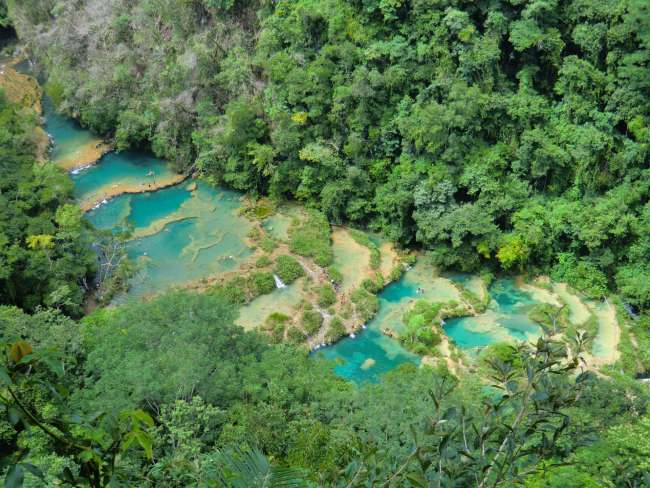
ጸብጻባት ጉዕዞ ጓቲማላ

